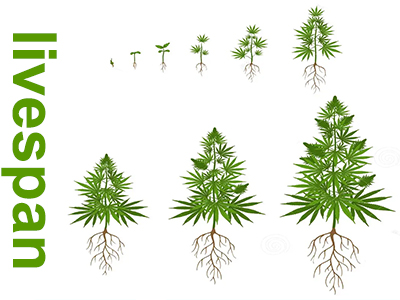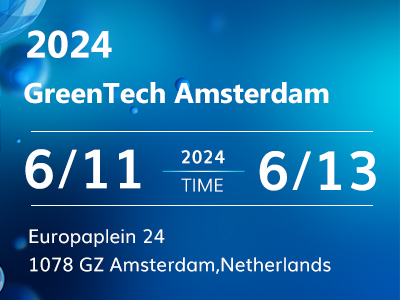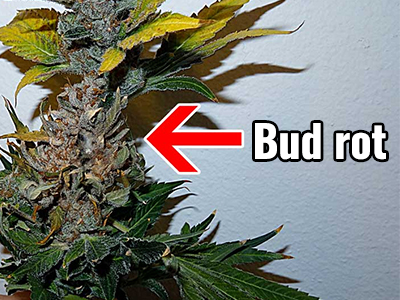
Most LED grow lights utilize red LED grow lights and blue LEDs, with their peak wavelengths optimized for plant photosynthesis. The peak wavelength for blue is around 450 nm, while red LED grow lights peak at about 660 nm, aligning with chlorophyll A and B absorption. Additionally, far red LED light extends the spectrum, offering wavelengths beyond 660 nm to further support plant growth.
The spectral absorption peaks are consistent. In this way, they can optimize the conversion of electrical energy to plant photosynthesis.
However, some LED grow light manufacturers are now offering growth lamps with "far red" LEDs with a peak wavelength of about 735 nm. Unfortunately, manufacturers have little information on why these LEDs are useful.
In order to make an informed choice when purchasing these far red led grow lights, it is necessary to understand some of the scientific knowledge behind far-infrared radiation and how plants perceive and respond to it.
Red and far red radiation
What we call "visible light" is electromagnetic radiation in the wavelength range of 400 to 700 nm. We believe that this radiation ranges from very deep blue (400 nm) (bordered by ultraviolet radiation) to very deep red (700 nm), bordered by infrared radiation. Coincidentally, this is also the wavelength range (photo-synthetically active radiation (PAR)) that plants can use for photosynthesis.
There is no formal definition of the wavelength "red", but it is generally considered to be composed of wavelengths from 600 nm (orange border) to 700 nm. On the other hand, the term "far red" has been formally defined as consisting of wavelengths between 700 nm and 800 nm. If the radiation intensity is large enough, we can hardly see that the radiation is very deep red, but in fact, it is invisible to the human eye. On the other hand, plants can easily perceive and respond to far infrared rays.
We think the vegetation is green because the chlorophyll A and B molecules strongly absorb blue and red light. A typical green leaf absorbs 90% of incident red light. The rest are reflected and transmitted (Figure 1). However, above 700 nm, chlorophyll is basically transparent. This means that about 750 nautical miles away, green vegetation reflects 40% of the light and transmits 55% of far infrared rays. The area where the spectral reflectance changes rapidly between 700 and 750 nm is called the "red edge" and is used to monitor vegetation coverage in space through remote imaging.

Typical vegetation spectral characteristics
Phytochrome
Angiosperms (flowering plants) also use a family of photosensitive molecules called plant pigments (Latin for "plant color") to take advantage of the red edge. Since they were around 1.They have been doing this since they first appeared in the fossil record 600 million years ago. It is no exaggeration to say that without these molecules, we still live in the world of conifers, cycads and ginkgo.
The amount of different plant pigments varies depending on the plant type-there are 3 types of rice, 5 types of Arabidopsis, 6 types of corn, and so on. Each type has different functions (usually multiple functions) in each species, but they all absorb red and far-red light in exactly the same way.
Each plant pigment molecule has two states, called isoforms. After being left in the dark for several hours, it will return to a state called Pr, in which it will strongly absorb red light (Figure 2). If a plant pigment molecule in this state absorbs red photons, it will change to its Pfr state, thereby absorbing far infrared rays. If the molecule absorbs far-red photons, it will return to the Pr state. When in the Pfr state, the molecule is biologically active and may interact with the plant's molecular mechanism. In view of this, plant pigments can be regarded as reversible biological switches, which can enable or inhibit various plant functions. One of such important functions is to detect neighboring plants.

Plant pigment absorption rate
Shade avoidance syndrome
Flowering plants that can tolerate all or part of the sun need to direct their leaves into the sun for photosynthesis. The problem is that they usually compete for the same resources with other factories. In other words, the leaves of other plants may prevent access in the current or future. For response, plants can elongate their stems and reduce branching in order to stand up in competition. In this way, it will inevitably divert resources from other priorities, including the production of secondary metabolites to resist pathogens and herbivores, thereby increasing drought resistance and reducing root biomass. Together, these responses are called refusal syndrome (SAS).
If the plant realizes or predicts that it cannot avoid being blocked, it will grow in a more compact form and bloom as soon as possible. Because it is crowded with other plants, it is more susceptible to pathogens and herbivores. The best strategy is to build a chemical defense system and produce seeds as quickly as possible while approaching the ground so that they can survive to the next generation.
On the other hand, flowering plants that like shade may not show any SAS response at least to the same extent. The sunlight they absorb is likely to have been scattered by the forest canopy, so it is less advantageous when allocating resources to avoid being blocked by the leaves of neighboring plants.
Red/far red ratio
On sunny days, the ratio of red light to far-red radiation in direct sunlight (R:FR) is about 1.3. In other words, the red light receives about 30% more far-red radiation than the plant leaves. Even sunlight reflected from natural inorganic materials (such as rocks and soil) has roughly the same R:FR ratio.
However, when direct sunlight is blocked by the leaves of neighboring plants, the "red edge" effect will remain. A single leaf can change the R:FR ratio from 1.3 to 0.2 or less. In other words, the red light incident on the plant leaves is now about six times less than the far infrared radiation. The difference between the two layers of leaves is more than 30 times.
Flowering plants use plant pigments to detect the R:FR ratio, and therefore decide whether a SAS response is required. In addition to detecting whether direct sunlight is directly blocked, plants can also determine from the R:FR ratio whether there are neighboring plants that may pose a future threat, and thus initiate an appropriate SAS response.
End of day
The R:FR ratio in direct sunlight is about 1.It is 3 for most of the day, but close to 0.At about 6 o'clock at dusk, the atmosphere preferentially scatters blue light, and the sky turns yellow and red. This can only last for half an hour or less, but it is important because the plant will use these changes to synchronize its internal body clock with the 24-hour workday and season. This involves an explosion of gene expression activity controlled by plant pigments.
Blackout curtains can be used in greenhouses to eliminate twilight, and both red and far-red LEDs can be used to simulate the twilight of vertical farms at the end of the daily light cycle. Interestingly, a low PAR value is required for this purpose, approximately 1 μmol·m-2·sec-1. For different species, various SAS responses to red and far-red pulses have been recorded, including changes in stem elongation and leaf area. For example, the end-of-day pulses of the far-sun radiation have been shown to extend the hypocotyls of tomato rootstocks that can be used for grafting.
Evening rest
Florists have long used incandescent lamps at night to destroy the photoperiod of short-lived plants such as poinsettia and chrysanthemum. At night, the plant pigment molecules return to the biologically inert Pr state. If the plant is exposed to an incandescent lamp (R:FR ratio is 0.7) At night, plant pigment molecules are reactivated, causing their biological clock to be reset. Repeated night exposures ("night rest") in the middle of the night can prevent plants from stopping vegetative growth and forming flower buds.
For long-day plants, rest lighting at night may have the opposite effect instead of delaying flowering. The operator here is "possible" because different species and even varieties respond differently to night rest.
It is important to note that only red lights can be used for night rest. When the plant pigment is in the Pr state, it cannot absorb far-red photons. Therefore, red LEDs with a peak wavelength of 660 nm are very suitable for night lighting, while far-red LEDs have no effect (Figure 5B). 2).
Far infrared radiation source
The R:FR ratio of a given plant is 1.3 when it is in direct sunlight, the ratio is much lower when it is blocked by neighboring plants. It is interesting to consider that we use various electric light sources to treat them. The R:FR ratio of incandescent lamps is 0.7. This is what the plant will feel when it is adjacent to the adjacent plant but not directly shaded.
On the other hand, the R:FR ratio of high-pressure sodium (HPS) lamps is about 4.8 as shown in FIG, the R:FR ratio of the metal halide lamp is 2.6 to 3.4. The R:FR ratio of white LEDs (independent of color temperature) changes from 3.6 to 40. The R:FR ratio of various fluorescent lamps is 5.5 to 13.0 and above.
The common reason for these high R:FR ratios is that, regardless of technical limitations, these lamps are designed for visual applications-there is no reason for them to produce invisible far-red radiation. If you do this, it will only reduce its luminous efficiency (lumens per watt) value.
With only blue and red LED grow light, the R:FR ratio is virtually unlimited. Sometimes blue light alone can cause SAS responses, but it may be that many plants are unable to recognize the presence of neighboring competitors under most growth lights.
Far Red Applications in Far Red LED Grow Lights
This leaves many questions about the possible application of far red LEDs. Although various species and varieties may grow well (or not grow) under the familiar blue and red ("fuzzy") LEDs, they may not exhibit any light protection syndrome response. In some cases, these responses may actually be needed. For example, sunlight-loving plants that grow in the shade may be more compact, but they may also exhibit greater pathogens and drought resistance, and they may produce ideal secondary metabolites as defense mechanisms. Their flowering may be advanced or delayed, and the number of buds may change the list continues.
At the end of the day with low radiation levels, far-infrared radiation may also have a greater impact on plant growth than during the day, because this is when gene expression is particularly active (blue light pulses at dawn have also been shown to change plant morphology). One advantage is that it requires less energy compared to continuously lighting far red LED grow light during the day.
For horticulturalists and florists, experiments with far-red LED plant light provide opportunities to develop light formulations for specific species and specific varieties that are trade secrets of species. If horticultural lighting manufacturers have not said why far-red LEDs are useful, it is because there are still many places that need to be researched and discovered. With the basic scientific knowledge behind far-infrared radiation and plant pigments, it becomes feasible to experiment with light recipes and photoperiods and understand why plants react to them.























